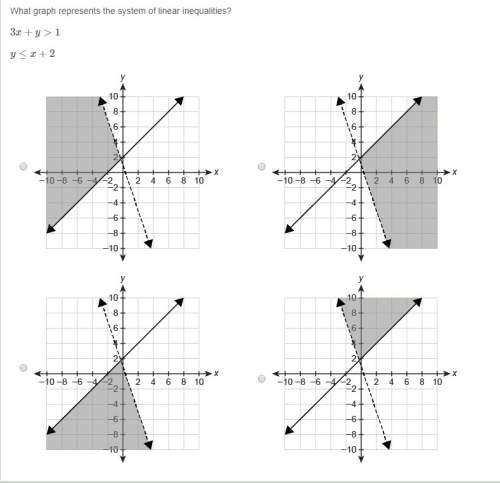
Mathematics, 24.10.2019 04:50 estebencampos69
Assume there is a variable , h already associated with a positive integer value. write the code necessary to count the number of perfect squares whose value is less than h, starting with 1. (a perfect square is an integer like 9, 16, 25, 36 that is equal to the square of another integer (in this case 33, 44, 55, 66 assign the sum you compute to a variable q for example, if h is 19, you would assign 4 to q because there are perfect squares (starting with 1) that are less than h are: 1, 4, 9, 16.

Answers: 3


Other questions on the subject: Mathematics


Mathematics, 21.06.2019 21:30, maddie02294
Look at triangle wxy what is the length (in centimeters) of the side wy of the triangle?
Answers: 1

Mathematics, 21.06.2019 23:20, elizediax8683
Which expression is a factor of 12x2 + 29x – 8? x – 8 2x – 1 3x + 8 4x + 1
Answers: 1

Mathematics, 21.06.2019 23:40, redhot12352
For a science project, a high school research team conducted a survey of local air temperatures. based on the results of the survey, the found that the average temperatures were around 10 degrees higher than expected. this result was wrong. the trouble with the survey was that most of the locations were exposed to direct sunlight and located over asphalt or sand, which resulted in higher temperatures than normal. this is a classic example of an error in which phase of inferential statistics?
Answers: 1
You know the right answer?
Assume there is a variable , h already associated with a positive integer value. write the code nece...
Questions in other subjects:

Business, 17.07.2019 03:20






Biology, 17.07.2019 03:20

Geography, 17.07.2019 03:20






